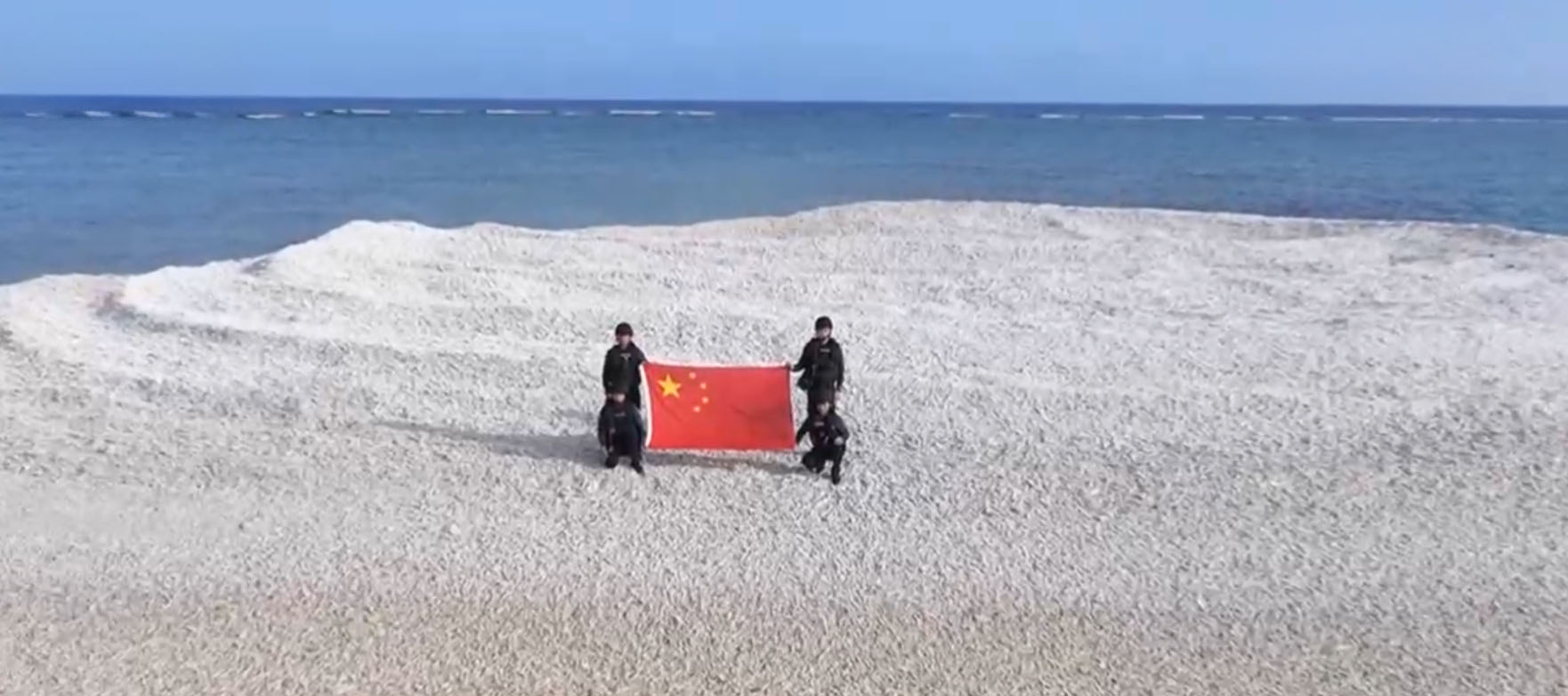美国军方重点转向威慑中国在台湾的企图
Richard Sanders
US Defense Secretary Pete Hegseth has unveiled a strategic directive aimed at reorienting the U.S. military’s focus to prioritize deterring China’s potential acquisition of Taiwan, with an emphasis on bolstering homeland defense. This internal memo, entitled the Interim National Defense Strategic Guidance, has been characterized as influentially shaped by the conservative think tank, the Heritage Foundation, with several passages closely mirroring their prior publications.
Marked “secret” and distributed across the Defense Department in mid-March, the document outlines a framework for responding to perceived threats, particularly from Beijing, and aligns with former President Donald Trump’s strategic vision for military preparedness. Hegseth’s guidance underscores the urgency of addressing a possible Chinese invasion of Taiwan, placing this scenario at the forefront of military planning and resource allocation, while re-evaluating the U.S. presence and commitments in Europe and other regions.
The directive indicates that the Pentagon will “assume risk in other theaters,” prompting European allies in particular to enhance their defense spending and take on a more significant role in deterring threats from Russia, North Korea, and Iran. Additionally, it directs a shift in focus for U.S. military operations toward countering illegal immigration and drug trafficking, while deemphasizing the counterterrorism effort against regional militant groups that lack international attack ambitions.
Highlighting China as the “sole pacing threat,” Hegseth stressed that U.S. strategic planning would concentrate exclusively on potential conflicts with Beijing, leaving other threats, such as that from Moscow, largely under the purview of European allies. This contrasts with the previous administration’s National Defense Strategy, which valued international alliances in confronting Russian aggression.
The memo has received mixed feedback on Capitol Hill, with some lawmakers expressing confusion over the withdrawal from various global commitments while simultaneously advocating for military dominance across the spectrum. Critics have noted a tension between maintaining a robust global presence and the intent to minimize U.S. deployment abroad.
Notably, the guidance includes directives for strengthening defense capabilities in the Indo-Pacific, increasing troop presence with advanced military assets, and enhancing logistics to safeguard U.S. interests. It also encourages Taiwan to substantially elevate its defense expenditure amid concerns about its military readiness in light of escalating regional tensions with China.
While reinforcing a commitment to deter a Chinese offensive, the document has ignited discussions about the broader implications of the U.S. military’s future role in global conflicts. As the Pentagon aligns with Trump-era strategies, it opens a dialogue on the complexities of balancing national security priorities at home and abroad.
美国国防部长皮特·赫格塞斯(Pete Hegseth)公布了一项战略指令,旨在重新调整美国军方的重点,优先威慑中国可能对台湾的收购,同时加强本土防御。这份内部备忘录,题为《临时国家防务战略指导》,被认为受到保守派智库传统基金会(Heritage Foundation)的重要影响,多个段落与该机构先前的出版物高度相似。
该文件标记为“机密”,并于3月中旬分发至国防部,概述了对潜在威胁的应对框架,特别是来自北京的威胁。赫格塞斯在指导中强调,尽快应对中国入侵台湾的可能性,将这一情境置于军事规划和资源配置的首位,同时重新评估美国在欧洲及其他地区的存在与承诺。
该指令表示,五角大楼将“假定在其他战区的风险”,促使特别是欧洲盟国增强其国防支出,并承担起更重要的角色以威慑来自俄罗斯、朝鲜和伊朗的威胁。此外,它还指示美国军方将重点转向打击非法移民和毒品贩运,同时降低对缺乏国际攻击目标的地区武装组织的反恐努力。
赫格塞斯强调,中国是“唯一的对标威胁”,美国的战略规划将专注于与北京的潜在冲突,这使得对来自莫斯科的威胁主要由欧洲盟友负责。这与前一届政府的国家防务战略形成对比,该战略重视在应对俄罗斯侵略时国际联盟的重要性。
国会山对此备忘录的反馈不一,一些立法者对在各种全球承诺上进行撤退的同时,倡导在军事上的主导地位感到困惑。批评者指出,在维护强有力的全球存在和希望减少美国驻军海外之间存在紧张关系。
值得注意的是,该指导还包括加强印太地区的防御能力、通过先进军事资产增加驻军、提升后勤保障以保护美国利益。它还鼓励台湾在对抗不断升级的地区紧张局势时,显著提高国防支出,以增强其军事准备。
在重申对威慑中国攻击的承诺的同时,该文件引发了有关美国军方未来在全球冲突中角色的更广泛讨论。随着五角大楼与特朗普时代的战略对接,它打开了关于平衡国内外国家安全优先事项的复杂性的对话。



